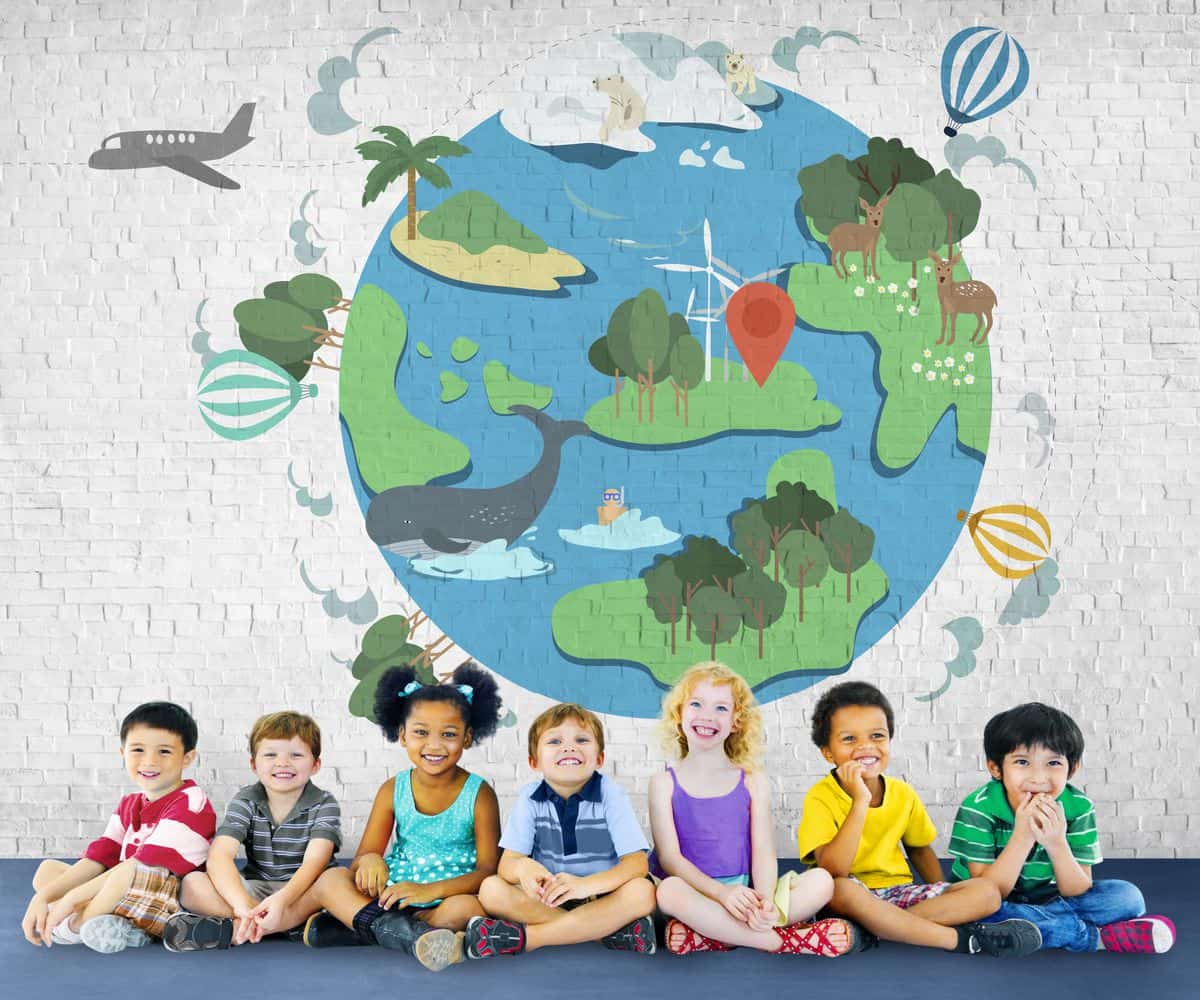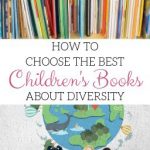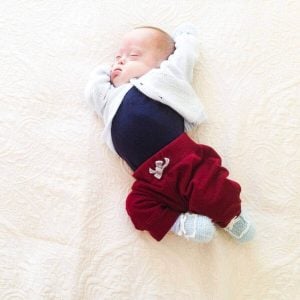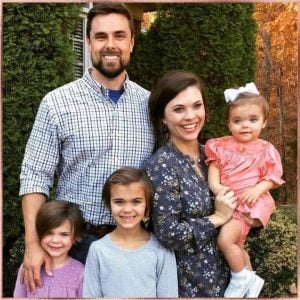A recent controversy over a “Back to School Reading List” demonstrated that sometimes schools, libraries, and other institutions that serve our children are slow to change. The controversial back to school list featured many old and out of date books. Nearly all were written by white authors and about white children. We’re here to talk about the importance of diverse children’s books, including children’s books about diversity specifically.
This list shows that parents trying to show their kids books about diverse children may have to look outside those institutions for resources on diversity. That’s why we’re here to provide you with an extensive list of good children’s books about diversity. Also learn how to choose empowering books for girls, and the importance of feminist books for boys and girls!

Children’s publishing is overwhelmingly made up of white individuals (86% as of a 2018 Publisher’s Weekly survey). But, there has been a growing movement on social media and among children’s literature experts to increase the number of children’s books about diversity published every year. This means 2 things:
- Publishing books about diverse children
- Publishing children’s books by diverse authors
Undefining Motherhood is excited to have Dr. Rebekah Fitzsimmons, a children’s literature scholar, write about this issue.

This site contains affiliate links, meaning that we earn a small commission for purchases made through our site. We only recommend products we personally use, love, or have thoroughly vetted.
What You’ll Find in This Article
Because this article is lengthy, we’ll provide an outline of what you’ll find. This post contains the following sections.
- “What Are Diverse Books?
- “Evaluating Diversity in Children’s Books”
- “How To Talk About Diverse Children’s Books”
- “Why Is Diversity In Books Important?”
- “What Finding Books with Diverse Children Might Look Like for Your Family”
- “Using Children’s Books to Teach Generosity and Grace”
- “The Problems with Representation of Minority Groups in Children’s Books”
- “#RepresentationMatters: The Importance of Books About Diverse Children”
- “Choosing Diverse Books for Your Home Library”
- “Valuing Children’s Books About Diversity”
- “How Do We Get More Diverse Children’s Books?”
- “Children’s Books About Diversity”
- “Board Books and Picture Books for Young Children”
- “Middle Grade Books”
- “Diverse Young Adult Books”
- “Other Resources”
So how do we find diverse books for children? Why is it important to read diverse books in the first place?
What Are Diverse Books?
First, let’s talk about what diverse children’s books are and why they are so important.
We Need Diverse Books, a grassroots non-profit dedicated to promoting diversity in children’s literature, explains that diversity is being inclusive of “all diverse experiences, including (but not limited to) LGBTQIA, Native, people of color, gender diversity, people with disabilities, and ethnic, cultural, and religious minorities.”
In other words, diverse books are either by authors or about characters that reflect any of these diverse experiences.
When looking for books to buy for your home, to take out of the local library, or to choose for your child’s reading in school, try to read widely across these categories.
I’m super excited to purchase these adorable books from @OrrsElementary Book Fair! The book selection is AMAZING & our students are represented! Thank you @LiteracyLeaderK for the love and excitement you bring to our media center! #RepresentationMatters #OrrsExcellence pic.twitter.com/AN8wOcK9rJ
— Quanedra Jackson (@MrsQJackson) September 4, 2019
Evaluating Diversity in Children’s Books
When you evaluate children’s books, it often helps to think about other kinds of representation you want to consider when evaluating books.
For example, think about how the children’s books you and your child have read recently represent families.
- How many stories feature families with same-sex parents?
- Single parents?
- Absent parents (due to incarceration, military service, immigration status or chronic illness)?
- Adopted parents?
- Step-parents?
How many books feature families from different socio-economic backgrounds than your family?
Has your child read stories about children experiencing homelessness or severe financial hardship?
It’s important to determine what types of diversity you want to represent to your children, and at what age they’re ready to understand it. A 2-year-old may not be prepared for a book about homeless children, while it might be an essential subject for your middle schooler.
But as popular books and TV shows like Daniel Tiger demonstrate, your 2-year-old can absolutely see representations of single-parent households and kids who live with people other than their parents.
How to Talk About Diverse Children’s Books
In looking for books about diverse children and families, it is helpful to understand some of the lingo used in professional circles.
In 1990, Dr. Rudine Sims Bishop wrote an article called “Mirrors, Windows, and Sliding Glass Doors” that is foundational in conversations about diverse children’s literature.
Books, she argued, are windows “offering views of worlds that may be real or imagined, familiar or strange.”
These books can also transform into sliding glass doors, allowing readers to walk inside and inhabit the world created by the author.
Books can also become mirrors, reflecting “our own lives and experiences as part of the larger human experience.” In the right circumstances and for certain children, a book can function as all three for a child.
This formulation for talking about diverse children’s literature has become a default shorthand for many literature experts.
You will often see librarians, teachers, and publishers Tweeting or writing about needing more accurate “mirrors” for a wider range of children, especially children of color. Essentially, representation is crucial for children, especially at an early age.
This is especially important now because even in 2018, there were more children’s books published that feature non-human protagonists (27%) than protagonists from all minoritized groups (Native/Indigenous, African American, Asian American, Latinx) combined.
Read that sentence again, dear reader: there were more NON-HUMAN protagonists in children’s books last year than MINORITY characters. See the infographic below.
Why Is Diversity in Books Important?
Studies suggest that reading literature can help us to be more empathetic and kinder to our fellow human beings.
Reading books that reflect experiences outside of our own offers us opportunities to try on the proverbial shoes of others and walk the world in a different way. This is true of both realistic and fantasy worlds.
For children, reading books about diverse children and families can help them understand so many hard concepts, such as:
- Their place in the world
- How they can relate to people who are different from them
- How to find their place in the beautiful tapestry of humanity
I know I learn and grow so much by reading books that feature characters with different experiences from me!
What Finding Books with Diverse Children Might Look Like for Your Family
For those parents raising white children who identify within other dominant social groups (such as cis-gendered, heterosexual, neurotypical, and able-bodied), the vast majority of books published for children function as both windows and mirrors.
There is a high likelihood that the main character of any book you pick up will resemble your child. With a little extra work, you could customize a reading list to reflect even more specific preferences.
For example, you could easily find a stack of books for middle grade readers about a white boy who likes dinosaurs. Or a set of picture books about going to school for the first time that features a young white, able-bodied, neurotypical girl.
The downside to this abundance of mirrors is that children from dominant groups get a distorted sense of their place in the world.
If every character they read about looks like them, celebrates the same holidays as them, and eats the same kind of food as them, they will be less prepared to interact with other children and adults who are different from them.
And, as Danielle from Mamademics reminds us, it’s important that her son “has books with lots of brown characters, so that he sees himself and his family in the characters.” She’s also cognizant that her children need to see books with families who don’t look like theirs, as well.
Using Children’s Books to Teach Generosity and Grace
As parents, we want our children to interact with generosity and grace when they see something out of their ordinary. When one of their classmates dresses differently or uses a mobility aid to get around. When a friend celebrates different holidays or brings a dish from a different culture to a class picnic.
On a larger scale, teaching white children, early and often, that individuals who look and speak differently from them have equal value, worth, and importance could go a long way to helping reduce racism and unconscious bias in future generations.
Imagine what our society might look like if every child was allowed equal space within the classroom and on library bookshelves.
The Problems with Representation of Minority Groups in Children’s Books
For those parents raising children who fall outside of that majority category in any way, finding a book that mirrors your child or represents them can be much harder. This is why Danielle talks about ensuring her children see other brown families in their books. Those books simply aren’t as readily available in the U.S. as they are for white children.

There may be only one or two books in an age group that feature a protagonist who looks like your child.
What is more, some of those books may feature what Dr. Debbie Reese has termed “fun house mirrors.” This means that books create mirrors that distort or inaccurately represent a culture, ethnic group, religion, or disability.
These distorted representations often offer more harm than good. This is partly because they rely on harmful stereotypes or promote inaccurate understandings of a minority group.
But it is also because that text often occupies a spot in a publisher’s “diversity roster,” thereby limiting the publication of other books that might offer a more accurate, nuanced picture of that same group.
All children deserve the opportunity to see themselves mirrored in the books they read, and to feel that their experiences in the world are a part of the larger human experience.
Want some sheer adorableness to convince you of the importance of seeing yourself represented in a book? Watch this little girl open a book and see HERSELF in it!
Want to make your child the star of their own book? Check out Put Me In the Story!
#RepresentationMatters: The Importance of Books About Diverse Children
For those on Twitter, the hashtag #RepresentationMatters highlights the delight and joy children from minoritized groups can experience in seeing themselves reflected on the front cover of a book for the first time.
Stories about reluctant readers devouring texts like Ms. Marvel or Children of Blood and Bone by Tomi Adeyemi show that there is a broad audience eager for stories about diverse characters. That’s also why Into the Spiderverse’s nuanced depiction of Miles Morales as a bi-racial teen Spiderman has received overwhelming acclaim.
Choosing Diverse Books for Your Home Library
If you believe representation matters, it’s important to choose books that reflect diversity for your own children or for the children in your life.
For me, one of the most stressful moments of preparing for the birth of my son was creating a registry of books for his baby shower.
This is not a major hurdle for most parents. However, as someone who earned a PhD in English by studying children’s literature and the impact children’s books can have on individuals and their larger communities, it stressed me out.
Pulling together a list of books for that would have direct influence over my own child felt like an even bigger test than my dissertation defense!
But I wanted a list for people to use because I knew I was going to encounter family and friends with deep attachments to “classic” books that have hugely problematic depictions of race and gender.
I also knew that I wanted to ensure that my son, who was born into both white privilege and socio-economic privilege, would have opportunities to read stories about children outside of his own lived experiences.
I wanted his nursery library to reflect a wide array of diverse characters, both real and pretend, who would teach him to accept those different from him.
I worked to curate a list of picture books that reflected these values (and a list I would return to frequently when recommending books to expecting friends).
Valuing Children’s Books About Diversity
Despite building this registry of children’s books, I still had well-intentioned family members who gifted us copies of books with values I would rather not share. Books such as The Giving Tree (which celebrates an abusive relationship) or from authors with racist histories (such as Dr. Seuss).
(Don’t know what we’re talking about with Dr. Seuss? Check out “The Cat Is Out of the Bag” in Research on Diversity in Youth Literature by Katie Ishizuka and Ramón Stephens. For shorter reads, see this article in People Magazine or this one on NPR.)
Children’s literature is filled with these “problematic faves” or classic texts that are passed on because they hold sentimental memories for adults.
Scholarship from an increasingly diverse field of children’s literature scholars, as well as expert librarians and teachers, has shown that these classics are actively influencing child readers. These books reinforce stereotypes and make children from misrepresented backgrounds feel devalued.
Despite this research, many adults have difficulty viewing these favorites from their childhood critically.
For others, it can feel like being told their favorite children’s book, like The Little House series, which features racist depictions of people of color, means they are being attacked for being racist themselves.
How, then do I, an expert in the field of children’s literature, go about finding and valuing diverse children’s books? And how can I share that knowledge with other parents who also value diversity?
How Do We Get More Diverse Children’s Books?
“Own Voices” (or the Twitter hashtag version #OwnVoices) is a movement that advocates for publishers to seek out, publish, and promote books written by members of diverse communities.
This could mean, for example, a Hispanic author writing a picture book about a Hispanic family or an autistic author writing a YA novel about an autistic teen’s experiences.
#OwnVoices advocates often argue that this kind of representation furthers the call for diverse representation of characters as well as diverse authors.
The hope is that individuals writing from their own lived experiences will offer more nuanced and authentic depictions of different minoritized groups.
I am being purposeful this year-asking for books written by authors and with characters that look like my students Thank you to the angle that shopped my amazon wish list #RepresentationMatters #diversebooks #UniversalLiteracyNYCDOE pic.twitter.com/PxBgoiMbYE
— teresa (@teresa_teaches) September 4, 2019
Children’s Books About Diversity
After all this talk about children’s books about diversity, I promised to provide a list of books about diverse children and/or by diverse authors.
This is a very small collection of some of my favorite diverse children’s books. This list is in no way exhaustive, but I hope it will get you inspired!
As our book series continues on Undefining Motherhood, I will write specific articles covering different kinds of texts, as well as a post on how to talk about diversity with your children! If there is a certain topic or type of book you are interested in learning more about, let me know in the comments!
Board Books and Picture Books For Young Children
- A is for Activist by Innosanto Nagara
- A Different Pond by Bao Phi and Thi Bui
- Asha’s Mums by Rosamund Elwin, Michelle Paulse; illustrated by Dawn Lee
- Alma and How She Got Her Name by Juana Martinez-Neal
- Crown: An Ode to the Fresh Cut by Derrick Barnes, illustrated by Gordon C. James
- Days With Dad by Nari Hong
- Golden Domes and Silver Lanterns: A Muslim Book of Colors by Hena Khan; illustrated by Mehrdokht Amini
- Haiti My Country by Haitian Schoolchildren; edited by Rogé and Solange Messier
- How Many Donkeys? An Arabic Counting Tale by Margaret Read MacDonald, and Hatia Jameel Taibah; illustrated by Carol Liddiment
- Jazz by Walter Dean Myers and Christopher Myers
- Last Stop on Market Street by Matt de la Peña; illustrated by Christian Robinson.
- Zak’s Safari: A Story about Donor-Conceived Kids of Two-Mom Families by Christy Tyner; illustrated by Ciaee
- Migrant/Migrar: The Journey of a Mexican Worker by José Mateo; illustrated by Javier Martínez Pedro
- My Story, My Dance: Robert Battle’s Journey to Alvin Ailey by Lesa Cline-Ransome; illustrated by James E. Ransome
- Salam Alaikum: A Message of Peace by J. Harris; illustrated by Ward Jenkins
- Soñadores by Yuy Moralesi
- Schomburg, The Man Who Built a Library by Carole Boston Weatherford, illustrated by Eric Velasquez
- Thank You, Omu by Oge Mora
- The Day You Begin by Jacqueline Woodson; illustrated by Rafael López
- The Stuff of Stars by Marion Dane Bauer; illustrated by Ekua Holmes
- When We Were Alone by David Robertson and Julie Flett
Middle Grade Books
- A Girl Named Misty: The True Story of Misty Copeland by Kelly Starling Lyons; illustrated by Melissa Manwill.
- Amal Unbound by Aisha Saeed
- Brown Girl Dreaming by Jacqueline Woodson
- Dactyl Hill Squad by Daniel José Older
- Fatty Legs: A True Story by Christy Jordan-Fenton & Margaret Pokiak-Fenton
- Fred Korematsu Speaks Up by Laura Atkins and Stan Yogi; illustrated by Yutaka Houlette
- Ghost by Jason Reynolds
- It Ain’t So Awful, Falafel by Firoozeh Dumas
- March Books 1-3 by John Lewis and Andrew Aydin
- My Night in the Planetarium by Innosanto Nagara
- Maritcha: A Nineteenth-Century American Girl by Tonya Bolden
- The Parker Inheritance by Varian Johnson
- The Birchbark House by Louise Erdrich
- Trickster: Native American Tales: A Graphic Collection by Matt Dembicki
- We Rise, We Resist, We Raise Our Voices Edited by Wade Hudson and Cheryl Willis Hudson
- Zoey and Sassafras (series) by Asia Citro
Diverse Young Adult Books
- A Few Red Drops: The Chicago Race Riot of 1919 by Claire Hartfield
- A Wish After Midnight by Zetta Elliott
- Akata Witch by Nnedi Okorafor
- Ash by Malinda Lo
- Charm and Strange by Stephanie Kuehn
- Code Name Butterfly by Ahlam Bsharat; translated by Nancy Roberts
- Darius The Great is Not Okay by Adib Khorram
- Dreaming in Indian: Contemporary Native American Voices by Charleyboy; Edited by Lisa & Mary Beth Leatherdale
- Gabi, A Girl in Pieces by Isabel Quintero
- Girls Like Me by Lola StVil
- If You Could Be Mine by Sara Farizan
- Monday’s Not Coming by Tiffany D. Jackson
- Monster: A Graphic Novel by Walter Dean Myers; illustrated by Guy A. Sim and Dawud Anyabwile
- Orleans by Sherri L. Smith
- None of the Above by I. W. Gregorio
- Shadowshaper by Daniel José Older
- See No Color by Shannon Gibney
- The Marrow Thieves by Cherie Dimaline
- The Poet X by Elizabeth Acevedo
- The Crossover & Booked by Kwame Alexander
- Tell Me Again How a Crush Should Feel by Sara Farizan
- #NotYourPrincess: Voices of Native American Women edited by Lisa Charleyboy and Mary Beth Leatherday
Other Resources
I’m delighted that I’ll be contributing future blog posts to Undefining Motherhood and hope to continue to address how to read diversely across children’s literature.
However, I am consistently looking to other experts to help me sort through the massive number of books published every month to find the very best.
If you are interested in learning more about the movement to diversify the children’s literature publishing industry, or just looking to expand the kinds of books you bring into your home, I recommend the following blogs!
- https://diversebooks.org/
- http://readingwhilewhite.blogspot.com/
- https://diversebooks.org/
- https://wtpsite.wordpress.com/
- https://americanindiansinchildrensliterature.blogspot.com/
- https://booktoss.blog/
- https://crazyquiltedi.blog/
- http://disabilityinkidlit.com/
- www.theconsciouskid.org
These are my go-to resources when I want to learn more about a particular book or when I’m looking to broaden my own reading horizons!
Interested in other book recommendations from Undefining Motherhood? Check these out!
- Choosing the best books for babies
- The most amazing kids books about winter
- Empowering books for girls
- Feminist books for boys
- Kids books about moving
What are your favorite children’s books about diversity?
We’re excited to welcome Rebekah Fitzsimmons to Undefining Motherhood! Rebekah has a PhD in children’s and young adult literature, and she’s also an avid reader and fan of it! Plus, she’s mom to a precious boy, who keeps her up-to-date on kid’s preferences.
We’re honored to have her join the Undefining Motherhood team as our new Children’s Literature Expert! Look forward to many more articles from Rebekah with all the information you need about books for your kids!










5 thoughts on “How To Choose The Best Children’s Books About Diversity”